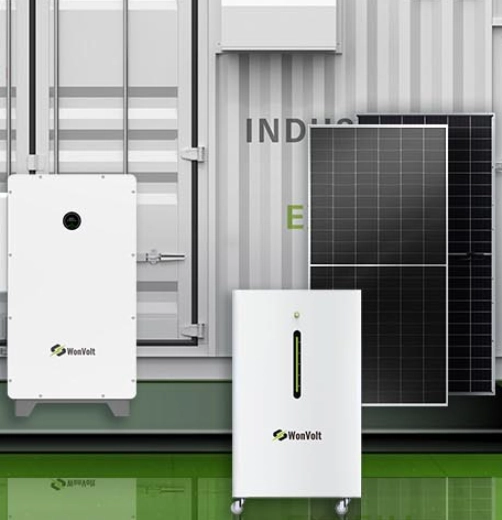
Got extra lithium batteries sitting around? Maybe from a solar setup or backup system. You want them to last when you pull them out months later. Storing them wrong can kill their life or even pose risks. This guide digs into the right ways. We’ll cover prep, conditions, and checks. It’s aimed at folks like you – business owners, or installers handling energy storage. Follow these steps, and your batteries stay strong.
Lithium batteries power a lot these days. Think factory backups. Policies in some places push for more renewable setups, like in rural areas where distributed energy grows. That means more batteries in use. But storage matters. Do it right, and you save cash long-term.
Why Long-Term Storage Needs Attention

Batteries aren’t like old tools you toss in a drawer. Lithium types react to heat, charge, and air. Leave them fully charged in a hot spot? They degrade fast. Or drain them to zero? They might not wake up. Proper storage keeps capacity high and safety in check.
For solar users, this hits home. Batteries store sun power for nights or outages. In commercial spots, like cold storage or mining, they handle peaks. Mess up storage, and your whole system suffers. Aim for methods that fit real life – easy but effective.
Getting to Know Lithium Batteries
First, basics. Lithium batteries come in big systems for industry.
Common Types for Energy Storage
Residential ones often range 3-30 kW. They pair with solar for off-grid or hybrid use. Industrial versions go 50-300 kW, for things like microgrids or diesel backups.
All use lithium-ion cells. These hold energy dense but need care. Unlike lead-acid, they last longer but hate extremes.
What Makes Them Tick – And Tick Out
Inside, ions move between parts. Over time, this wears down. Self-discharge happens slow, about 1-2% monthly if stored right. But heat speeds it. Charge too high? It stresses cells. Too low? They go unstable.
Know your battery’s specs. Most have built-in management systems. These protect during use, but in storage, you take over.
Prepping Your Batteries for the Long Haul
Don’t just unplug and forget. Prep first. It takes little time but pays off.
Hit the Right Charge Level
Store at 40-60% charge. Why? Full charge pushes cells hard, leading to breakdown. Empty? They dip too low and damage.
For example, aim for half. Use a charger to get there. Some say 50% exact. Check voltage if you can – around 3.7V per cell.
In practice, plug in and watch the display. Let it sit a day to settle.
Clean Up and Check Over
Dust or dirt? Wipe off. Look for dents or leaks. If damaged, don’t store – recycle.
Disconnect cables. Label with date and charge level. Simple notes help later.
For stacks, separate if possible. Avoid shorts.
Setting Up the Perfect Storage Spot
Where you put them counts most. Pick wrong, and they age quick.
Temperature: The Big Factor
Cool is key. Ideal: 15°C or 59°F. Range okay from -20°C to 25°C, but avoid over 30°C.
Heat boosts reactions inside. At 40°C, they lose 20% capacity yearly. Cold slows but don’t freeze – under -20°C risks cracks.
Garages work if not too hot. Basements often stay steady. No attics – they swing wild.
In rural setups, where policies boost solar, sheds might do. But insulate.
Humidity and Surroundings
Dry air only. Under 50% humidity. Moisture causes rust or shorts.
No damp basements. Use silica packs if needed.
Keep away from sun, water, or fumes. Metal shelves fine, but ground them. No near flammables.
Ventilated spots help. Air flow prevents buildup.
How to Position Them
Flat or upright, per manual. Most okay any way, but check.
Space them out. Don’t stack heavy. Use racks for big packs.
For safety, fireproof boxes if worried. They contain issues.
Here’s a quick table on conditions:
| Factor | Best Range | Why It Matters |
| Charge | 40-60% | Balances stability and life |
| Temperature | 10-20°C | Slows degradation |
| Humidity | <50% | Prevents corrosion |
| Location | Cool, dry, ventilated | Avoids extremes and risks |
Keeping an Eye During Storage
Storage isn’t set-and-forget. Check in.
Regular Peek-Ins
Every 3 months, inspect. Look for swelling or leaks. Test voltage.
If drops below 20%, recharge to 50%. Self-discharge varies, but plan checks.
For large systems, use monitors. Some apps track remotely.
When to Recharge
If stored over 6 months, full cycle once. Discharge a bit, then back to storage charge.
This refreshes cells. But don’t overdo – cycles wear them.
In commercial use, like farming or processing, rotate stock. Use older first.
Safety First in Storage
Lithium batteries can catch fire if mishandled. Rare, but prep.
Cutting Fire Risks
Store in non-flammable spots. Use rated cabinets for many.
No near heat sources. Smoke detectors nearby.
If damaged, isolate. Don’t charge suspects.
Policies in some areas require safe storage for renewables. Follow local rules.
Handling Tips
Wear gloves. Avoid drops.
For transport to storage, secure. No loose in cars.
Kids or pets? Lock away.
Mistakes That Trip People Up
Common slips ruin batteries.
- Storing full charged. Speeds wear.
- Hot spots like cars in summer.
- Forgetting checks. They drain flat.
- Mixing old and new. Causes imbalance.
- Damp areas. Leads to shorts.
Avoid these, and you’re good.
Tailoring Practices to Your Setup
Different uses need tweaks.
For Business or Industrial
Bigger systems, like 50kW+, need warehouses. Climate control helps.
In mining or cold storage, dust-proof covers.
Microgrids? Store spares rotated.
Rural spots gain from policy pushes. More batteries mean better storage plans.
Bringing It All Together
Storing lithium batteries long-term boils down to charge, cool spots, and checks. Do this, and they hold power when needed. It extends life, cuts waste. For solar fans or business folks, it’s key to reliable energy. Start simple – prep one today.
About WonVolt: Your Reliable Lithium Batteries Supplier
WonVolt serves as a trusted lithium batteries supplier. Launched in 2016 in Hefei, China, under a group from 2000. We focus on industrial and commercial energy storage systems, with over eight years experience. Staff totals 87, 24 tech pros. Sales reached 50 million dollars in 2023. Products go to over 90 countries. Capacity: 1.2GW solar panels, 2.5GWh batteries. We make various types, like liquid-cooling and air-cooling for projects, plus residential sizes. Mission: Better world energy, power future. Offer custom fits with site checks and install aid.
FAQs
What’s the top charge level in best practices for storing lithium batteries long-term?
Around 40-60%. This keeps cells stable without stress. Full or empty hurts over time.
How does temperature fit into best practices for storing lithium batteries long-term?
Keep at 10-20°C. Heat speeds breakdown; cold can crack. Steady cool spots work best.
Can I store lithium batteries in damp places following best practices for storing lithium batteries long-term?
No. Dry under 50% humidity. Moisture leads to issues like rust or shorts.
Why check batteries periodically in best practices for storing lithium batteries long-term?
Self-discharge happens. Every 3 months, recharge if low. Keeps them ready.

